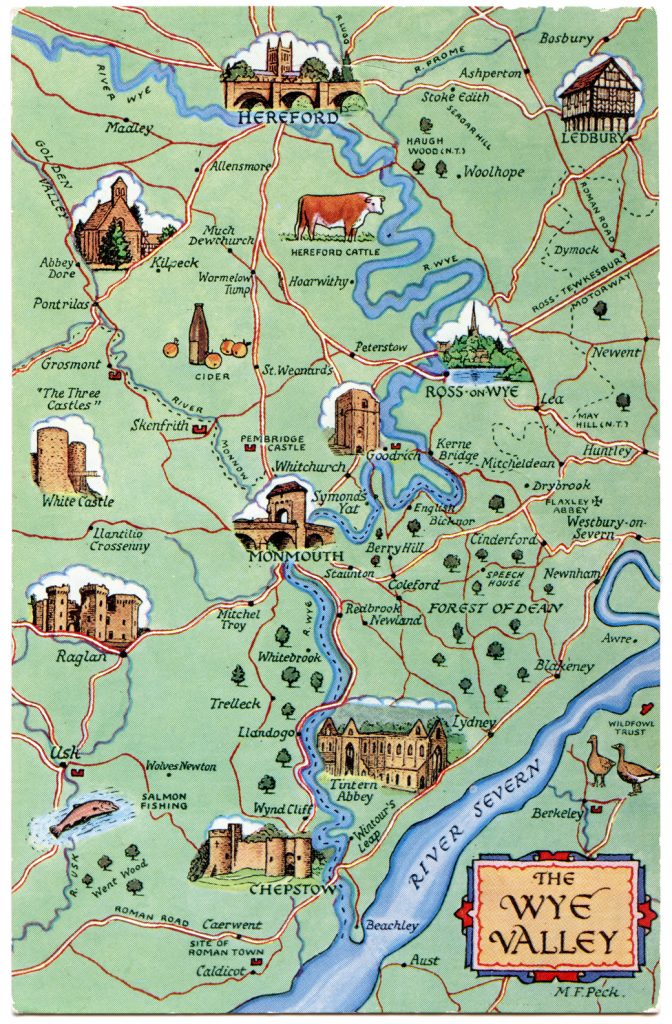Wye Valley
Starting from its source on Plynlimon, mid Wales, The River Wye winds 134 miles (216 km) through Powys, Herefordshire, Gloucestershire, and Monmouthshire to the Severn estuary just below Chepstow.
One of the finest Salmon rivers in England and Wales, the Wye has helped form the idyllic Wye Valley. This internationally important protected landscape is made up of Areas of Outstanding Natural Beauty, important for nature conservation and recreation, is protected by two Sites of Special Scientific Interest, and includes a Special Area of Conservation. The Wye is an important river for nature conservation, a migration route and wildlife corridor, as well as a key breeding area for many nationally and internationally important species.
Unsurprisingly, The beautiful Wye Valley is historically important as one of the birthplaces of modern tourism with some magnificent Castles and Ancient Monuments to discover, as well as many outdoor pursuits from scenic walks to cycling, caving, canoeing and much more.
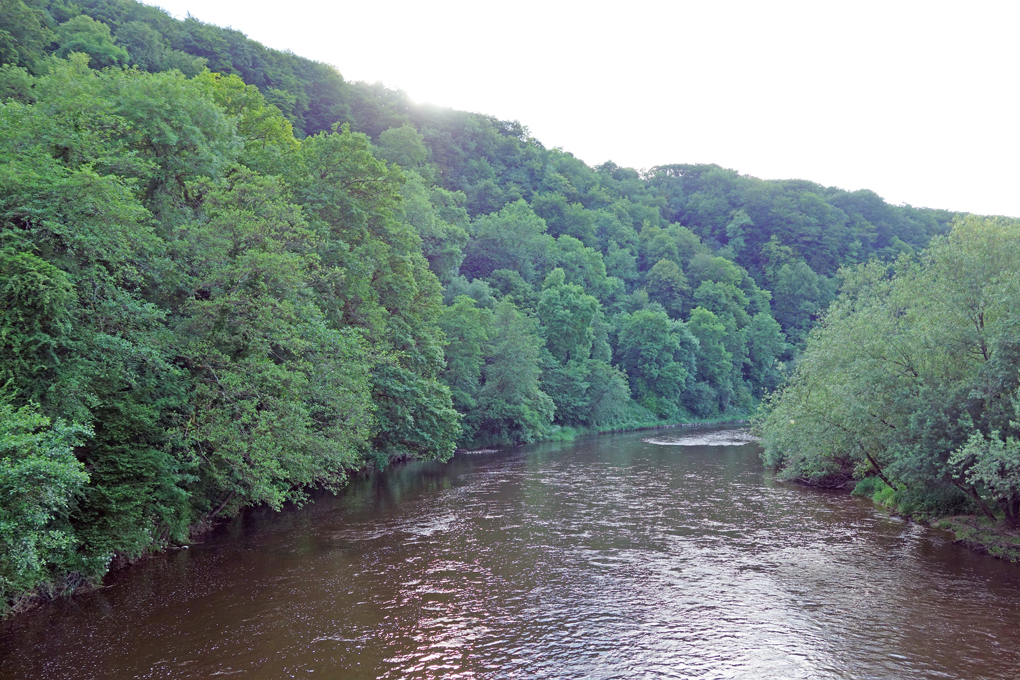
Symonds Yat
Symonds Yat is the jewel in The Wye Valley’s crown, its name dates back to at least the 13th century and covers parts of Gloucestershire, Herefordshire and Monmouthshire. It is recognised in particular for its limestone gorge scenery and dense native woodlands, as well as its wildlife, archaeological and industrial remains. The surrounding area was also known as New Weir.
Symonds Yat is an ideal place for a relaxing walk, or an invigorating hike. There are endless miles of forest and tracks to explore, and if you add the nearby Forest of Dean, you could literally spend weeks navigating your way, from hamlet to parish, without encountering anything more than quiet woodland and ancient British wilderness.
Fallow deer, barn owls and peregrine falcons are often seen or heard, and very occasionally wild boar can be seen too. Badgers are common, though rarely seen, and stoats, weasels, foxes, woodmice, bank voles and even dormice are present. Many species of butterfly, hornets, bats and the exotic looking Meta Menardi European cave spiders also make their home in the woods and caves.
The area is steeped in archaeological history with the bones of hyenas, sabre-toothed cats and a mammoth in and around the caves of the valley – human habitation can be traced back 12,000 years with findings of their tools and clothes.
There are Iron Age forts on the Great Doward and Yat Rock which offered secure, defensible settlements for the local residents. During Roman times these forts became focal points in the region and the importance of the iron here and in the Forest of Dean made this a valuable prize for the conquerors. Offa’s Dyke, built in the 8th century to separate England and Wales, runs close to Symonds Yat.
The Yat Gorge was once an industrial hotbed of activity, mined for iron ore since the 1500s, with remains of a smelting works located down stream of the Rapids. There are also several lime-kilns which were used from the 1700s onwards (more info here).
The river ferry at Symonds Yat has always played a huge part in the life here. In 1800 there were 25 hand ferries between Ross and Chepstow just like those outside Ye Old Ferrie Inn and the Saracen’s Head today. They were introduced in Roman times to link the forts of the Doward and the Yat (read more here). The last major public transport works in the gorge took place during the age of Steampower. The Ross to Monmouth rail line opened in 1873 and closed in 1959 with remnants of the line (including rail tunnels still in existence at both Symonds Yat and Lydbrook) still visible along the river today (watch old footage here).
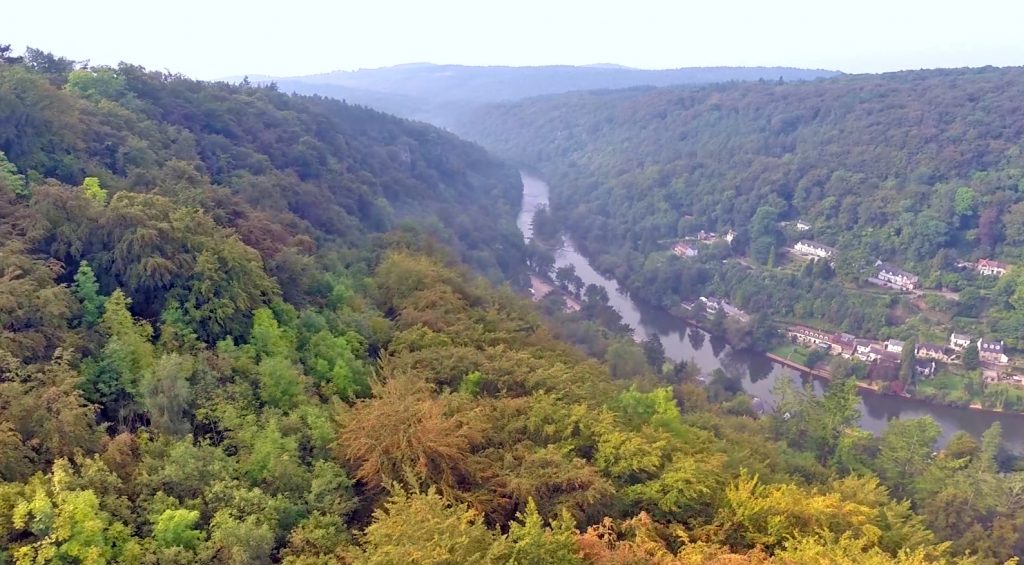
Things To Do & See
The Saracen’s Head Inn, is excellently located for exploring Herefordshire, Monmouthshire, Gloucestershire, The Wye Valley, Forest of Dean, Malvern Hills, Brecon Beacons, The Black Mountains and the surrounding area. Whether you are looking for fun-packed days out, or simply relaxing.
The Inn is situated in Symonds Yat East, equidistant from the market towns of Ross-on-Wye and Monmouth (approximately 5 miles away). The larger market towns of Hereford and Abergavenny being within easy driving distance. Summer is by far the busiest time. There is so much to see and do if you visit, it’s not all about food and drink though. We take a brief look at some of the many things you may wish to try while visiting the area:
Hiking Trails
Wye Valley Walk – Monmouth to Ross on Wye
The Wye Valley Walk is a 136 mile (218km) hike of startling contrasts from ravine gorge cloaked in woodland, through meadow and orchard, to rugged and remote uplands. The walk begins many miles away up stream of Symonds Yat and follows the Wye through the battle scarred Anglo-Welsh borders to where it pours in rocky cascades from its mountain source.
If you are visiting for a few days and wish to complete a small part of this walk, you may want to consider the Monmouth to Ross section. Starting in open fields this is an almost entirely level stretch of riverside walking following the meanders of the Wye and passing under the spectacular limestone cliffs and woodlands of the upper Wye gorge.
The walk passes through Symonds Yat then, at just over half way to Ross, there’s an abrupt change of pace, the path climbing through steeply wooded hills and narrow valleys around Leys Hill and Howle Hill, before dropping into Ross from the heights of Chase Hill. The opposite direction from Monmouth will take you to the beautiful surroundings of Tintern Abbey with plenty more exploring to do, such as the Devil’s Pulpit.
Goodrich Castle, Coppett Hill & Welsh Bicknor
For an historic and interesting day out, this route takes in the impressive grandeur of Goodrich Castle and Coppett Hill. Parts of this route are also included in the Wye Valley Walk. Primarily a Norman medieval castle, Goodrich Castle became the scene of one of the most desperate sieges during the English Civil War in the 1640s.
The picturesque ruins of the castle inspired many artists’ work, including David Cox, who produced beautiful watercolours in 1815. It was also captured in poem by William Wordsworth when he met a little cottage girl in October 1793 and subsequently wrote the fascinating and mysterious poem ‘We Are Seven‘. Wordsworth walked the Wye twice and his poem ‘Tintern‘ is thought to be heavily influenced by his walks around Symonds Yat and New Weir en route to the historic abbey.
Coppett Hill is home to fallow deer, adders, many species of butterfly and stunning views. The top of the hill has been declared a Nature reserve. At the foot of the hill (Welsh Bicknor) is a Norman style church which is no longer open, find the ancient grave stone of the boy who drowned- A reminder about the perils of the Wye. If you follow the river bank up towards Symonds Yat for half a mile, find the old iron girder rail bridge which now carries the Wye Valley Walk across the river. If you head inwards toward the hill you can find a disused rail tunnel. The route is explained on The AA Website as Beside the River Wye and up Coppet Hill.
The Little Doward and Great Doward
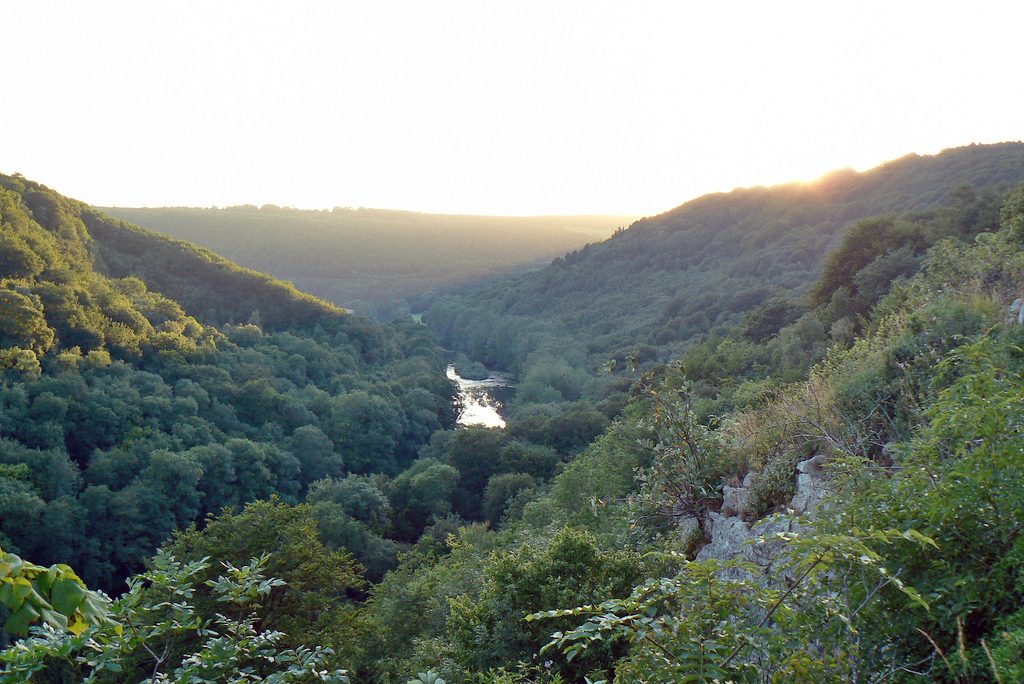
The hamlets of the Little, and Great, Doward make up a substantial part of the Yat. The Great Doward consists of extensive stratified limestone mountains with large deposits of rich iron-ore. The Yat Gorge was mined for iron ore and remains of a smelting works are located down stream of the Symonds Yat Rapids. To the west, the area is woody with wild elevations, an Area of Outstanding Natural Beauty (AONB). Little Doward hosts a British hill fort which seems to have been refortified in the post-Roman era. Scattered throughout the large-scale Yew, Ash and Beech forests exist an extensive network of caves – King Arthur’s Cave was home to several archeological digs (read more here).
A very easy walk can be had from the Saracen’s Head downstream to the Biblins bridge and back the same side, or over the bridge, and back up to the Saracen’s hand ferrie. The Seven Sisters Rocks are impressive Carboniferous limestone cliff pillars further downstream of the Biblins; near to a large disused quarry. For the experienced hiker, there are walks which wend their way around the upper escarpments with some very precarious and potentially dangerous but rewarding vantage points (not recommended for children or anyone unsteady on their feet).
Yat Rock and Symonds Yat East
Symonds Yat Rock overlooks the Forest of Dean, Coppett Hill and Wye Valley. The immediate landscape is of the River Wye which winds its way through the gorge. The rock is the perfect viewpoint to see the nesting peregrine falcons who set up home every year (roughly April to August). Other birds such as buzzards, goshawks and hobbies are also regularly seen, it is occasionally possible to see migrant raptors such as ospreys and European honey buzzards.
From Symonds Yat Rock there are marked trails linking to the many meandering woodland and riverside walks. Phone reception can be very weak and often non existent but the woodland paths are tranquil with stunning scenery. A hill fort was built here around 2,500 years ago. The site is now a scheduled ancient monument. A scene from the movie Shadowlands was filmed at Symonds Yat Rock, and it was used as a location for some episodes of Series 5 of the BBC television drama Merlin. Symonds Yat was used as a location for some of the shots filmed in Harry Potter and the Deathly Hallows. There are several routes up to the Rock from the Saracen’s Head Inn. We have our own Wye Valley Walking Guide which can be downloaded as a pdf here or pick up a copy at the pub.
The Sculpture Trail
A few minutes drive from Symonds Yat is the Forest of Dean Sculpture Trail. Established in 1986, this four mile long Sculpture Trail was one of the first to open in the UK. The Trail features sculptures created by artists to interpret the Forest environment and the history of this very unusual landscape. It provides a unique opportunity to walk through the woodlands and discover art along the way. Perfect for all ages and abilities, you don’t need to know about art to enjoy what you see.
The sculptures are installed within the woodland to encourage you to seek them out – the posts with blue rings will direct you – but if you want to make life easier for yourself, pick up a map at Connections at Beechenhurst. If you want to know more, visit www.forestofdean-sculpture.org.uk, where you will find information about all of the artists and the artworks.
Other Useful Links
Easy Walks of The Wye Valley & Forest of Dean
Goodrich and Symonds Yat – circular
Wye Valley – Head For Hill Forts
Historic Places
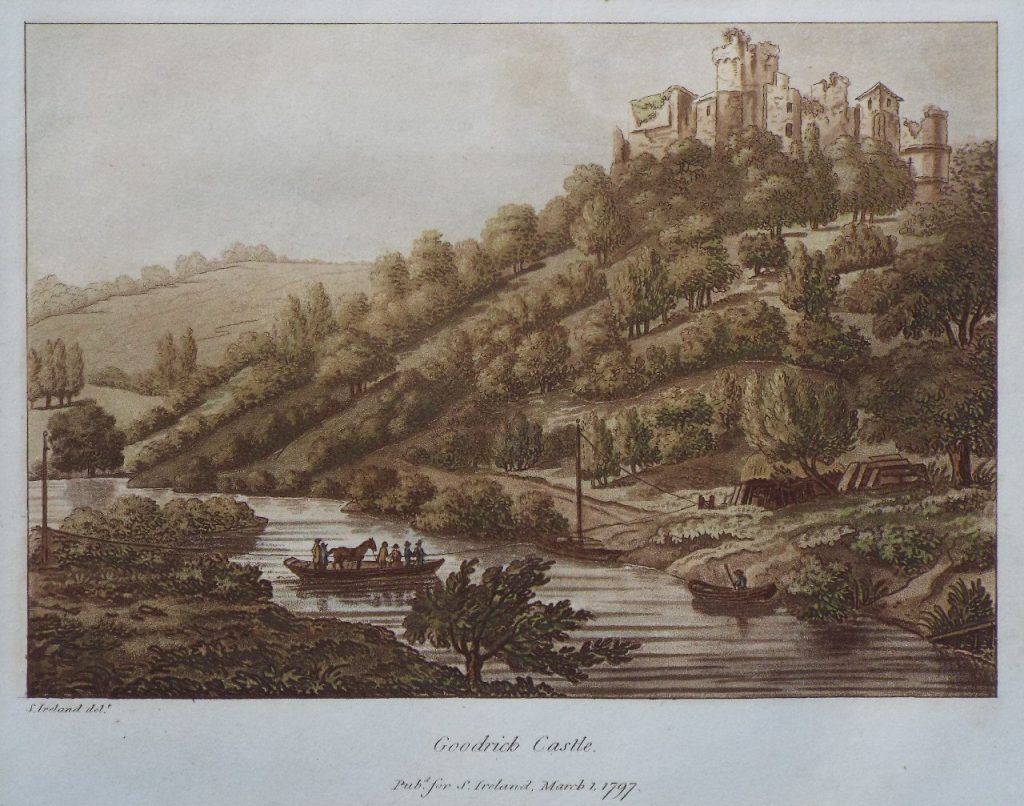
Herefordshire and the Wye Valley is steeped in history. Thanks to the Normans during the 11th Century, we have plenty of ancient castles and monuments around the area.
Goodrich Castle stands in open countryside above the River Wye. The castle is one of the finest and best preserved of all English medieval castles. Boasting a fascinating history, spectacular views from the battlements and a delightful tearoom, Goodrich Castle promises a great day out for everyone, for information visit their website click here.
Tintern Abbey is one of the most spectacular ruins in the country. It’s a medieval abbey which sits on the banks of the River Wye in Tintern, for information visit their website click here.
Raglan Castle is a late medieval castle located just north of the village of Raglan in the county of Monmouthshire, for information visit their website click here.
Skenfrith Castle is
a ruined castle in the village of Skenfrith in Monmouthshire. The
fortification was established by the Normans in the wake of the invasion
of England in 1066, to protect the route from Wales to Hereford, for
information visit their website click here.
White Castle also known historically as Llantilio Castle, is a ruined Norman castle near the village of Llantilio Crossenny in Monmouthshire, for information visit their website click here.
Grosmont Castle is a ruined castle in the village of Grosmont, Monmouthshire. The fortification was established by the Normans in the wake of the invasion of England in 1066, to protect the route from Wales to Hereford (see also Three Castles Walk), for information visit their website click here.
Hereford Cathedral is the cathedral church of the Anglican Diocese of Hereford in Hereford, England. Its most famous treasure is Mappa Mundi, a medieval map of the world created around 1300 by Richard of Holdingham. The map is listed on the UNESCO Memory of the World Register, for information visit their website click here.
Gloucester Cathedral, formally the Cathedral Church of St Peter and the Holy and Indivisible Trinity, in Gloucester, England, stands in the north of the city near the River Severn. It originated in 678 or 679 with the foundation of an abbey dedicated to Saint Peter, for information visit their website click here.
Kilpeck Church is a Church of England parish church in Herefordshire. Pevsner describes Kilpeck as “one of the most perfect Norman churches in England”. The church was built around 1140, it may have replaced an earlier Saxon church at the same site, and the oval raised form of the churchyard is typical of even older Celtic foundations. For more info click here and here.
Dore Abbey is a former Cistercian abbey in the village of Abbey Dore, Herefordshire. A large part of the original medieval building has been used since the 16th century as the parish church. For more info click here.
Cycling Routes
From our door, you can cycle many kilometers along quiet country lanes, through tiny hamlets, past old pubs and over the river on wooden footbridges. We could even plan a route for you! There is also the Forest of Dean and it’s 200km of easy cycle trails, including the popular 15km family cycle route. The inn itself is situated on The Peregrine Path – a level cycle route which traces the river from Monmouth along the river to The Saracens. It follows the old railway line for 10km and is great for all ages Download The Peregrine Path Map.
There are various other off-road tracks and easy access to the Forest of Dean, Pedal A Bike Away will be able to inform you of the many different cycling routes in Symonds Yat and the Forest of Dean. Cross-Country, Downhill, Freeride or just ride. One can Mountain Bike from the door of the Inn, or go to the designated mountain bike area in the Forest of Dean, with it’s very biker friendly café, showers, small shop and a cycle repair centre. There are also the Brecon Beacons for wide open MTB adventures. Further away but within striking distance is Cwmcarn, legendary XC course and uplift serviced DH piste.
Canoeing
Why not explore the area by River? You can hire a canoe or kayak from the Wyedean Canoe & Adventure Centre located next to The Saracens Head. It’s a brilliant way to explore the nooks and crannies of the river, you can start up stream and work down over the course of a day or start from near the Saracen’s Head Inn and canoe up stream with a gentle meander back down. You will see the area in a completely different light and it’s always a great way to work up a thirst and appetite for the evening.
River Cruises
If canoeing isn’t your thing, you can try a scenic gentle river cruise with guided talk.
Kingfisher cruises operate from outside The Saracens Head. They offer 45 min cruises along the River with guided commentry.
Fishing Trips
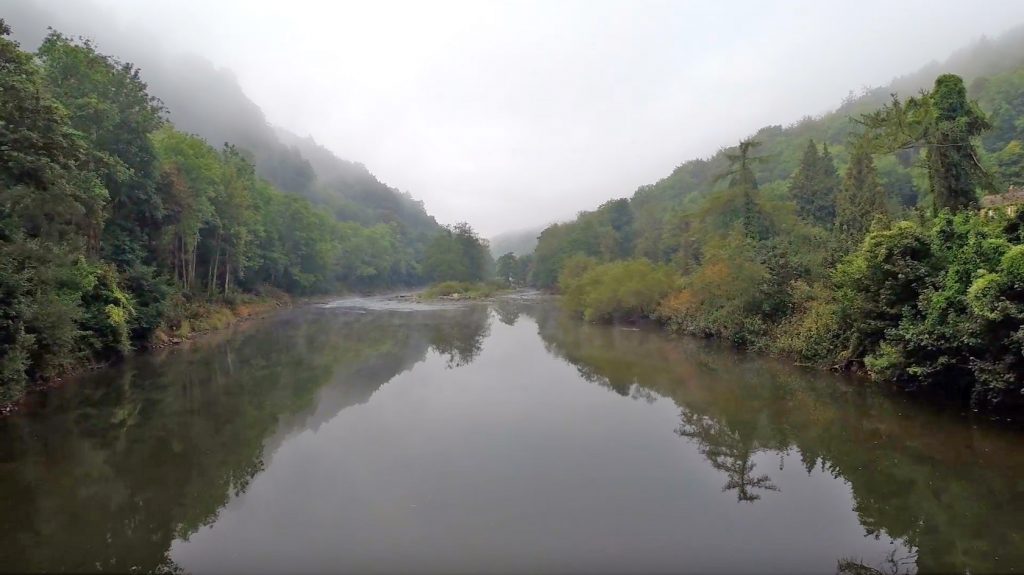
The River Wye is one of the finest fishing destinations in the UK. It is the fifth-longest river in the UK, stretching some 215 kilometres (134 mi) from its source on Plynlimon in mid Wales to the Severn estuary. The Wye is important for nature conservation and recreation, fishing has traditionally played a large role in both survival for people living near it and for tourism.
You can find barbel, chub and pike as well as roach, dace, perch and even the odd carp. Residents of the Saracen’s Head Inn can fish for free on the Newport Anglers stretch outside of the Inn but only during the coarse fishing season which runs from 16th June to 14th March. Please see www.anglingdreams.co.uk for all your fishing related enquiries.
Bird Watching
Symonds Yat Rock viewpoint is well known as one of the best, if not THE best site to watch Peregrine Falcons. However, there is much more to be seen and regular birdwatchers can be well rewarded for their patience.
You can find King Fishers, Goshawks, Tawny Owls, Nuthatches, Coal Tits, Swifts, Swallows and House Martins to name but a few. You will find more information on bird watching in Symonds Yat on the RSPB Symonds Yat Rock page.
Rock Climbing
Symonds Yat couldn’t be a better place to experience the thrill and excitement of Rock Climbing, with heights from 10 metres to 30 metres plus! Climbing on the natural surrounding Limestone cliffs with professional instructors is perfect for those who want to experience Climbing in a safe and relaxing environment or those who want to perfect their skills.
Wye Dean Adventure Centre is situated next to the Saracen’s Head Inn car park and offers everything you will need. Their instructors are either SPA (Single Pitch Award), MIA or MIC- qualified and site specifically trained, so you can enjoy your experience knowing that you are in safe and competent hands. A 3 hour Climbing session starts at the land centre at Symonds Yat Rock. With only a 10 minute walk to the cliffs you get the most out of your time. More info here.
Caving Tours
Symonds Yat is riddled with interesting caves, some man made, some natural and others a combination of the two. There are a few caves near the Biblins which are of special archeological interest such as King Arthur’s cave.
Walk, crawl and sometimes shuffle through miles of passageways into vast open caverns with stalactites and stalagmites. Many Species of Bats call the Caves home and the only way to get a close up look is to go caving! All of Wye Dean’s caving instructors are Qualified Cave leaders and are site specific trained on the surrounding caves.
A 3 hour session starts from their centre and entails a short walk to the start of the caves, you are given a boiler suit, helmet and light and with a brief explanation of where you are going, you then set off into the caves being lead by the instructor. Suitable for novices and experienced alike. You can choose a cave system that is suitable for your requirements. Caving is great fun for all persons aged 8 and upwards. See Wye Dean Adventure Centre for more info.
Hedge Puzzle
The Jubilee Maze is one of Britain’s most famous traditional hedge mazes, with a romantic temple at the centre and over a kilometre of hedges. It was planted by Lindsay and Edward Heyes in 1977. Find your way then play! This maze is a great place to play tag or Marco Polo with all the family. Not up to running around? Play by stealth! There’s a viewing platform for calling directions… but who can you trust?
Next door is the Butterfly Zoo. You can walk with butterflies from around the world. Wye Valley Butterfly Zoo is indoors, it’s tropical and it’s teeming with exotic butterflies. Living butterflies fly around as you discover their fascinating lives in close-up. They’re amazing. See for yourself every stage of their life-cycle: Egg, caterpillar, chrysalis and some of the world’s most beautiful butterflies.
Towns in the Area
- Ross-on-Wye
- Monmouth
- Hereford
- Chepstow
- Hay-on-Wye
- Ledbury
- Abergavenny
Click here for directions to The Saracen’s Head Inn & Symonds Yat.
